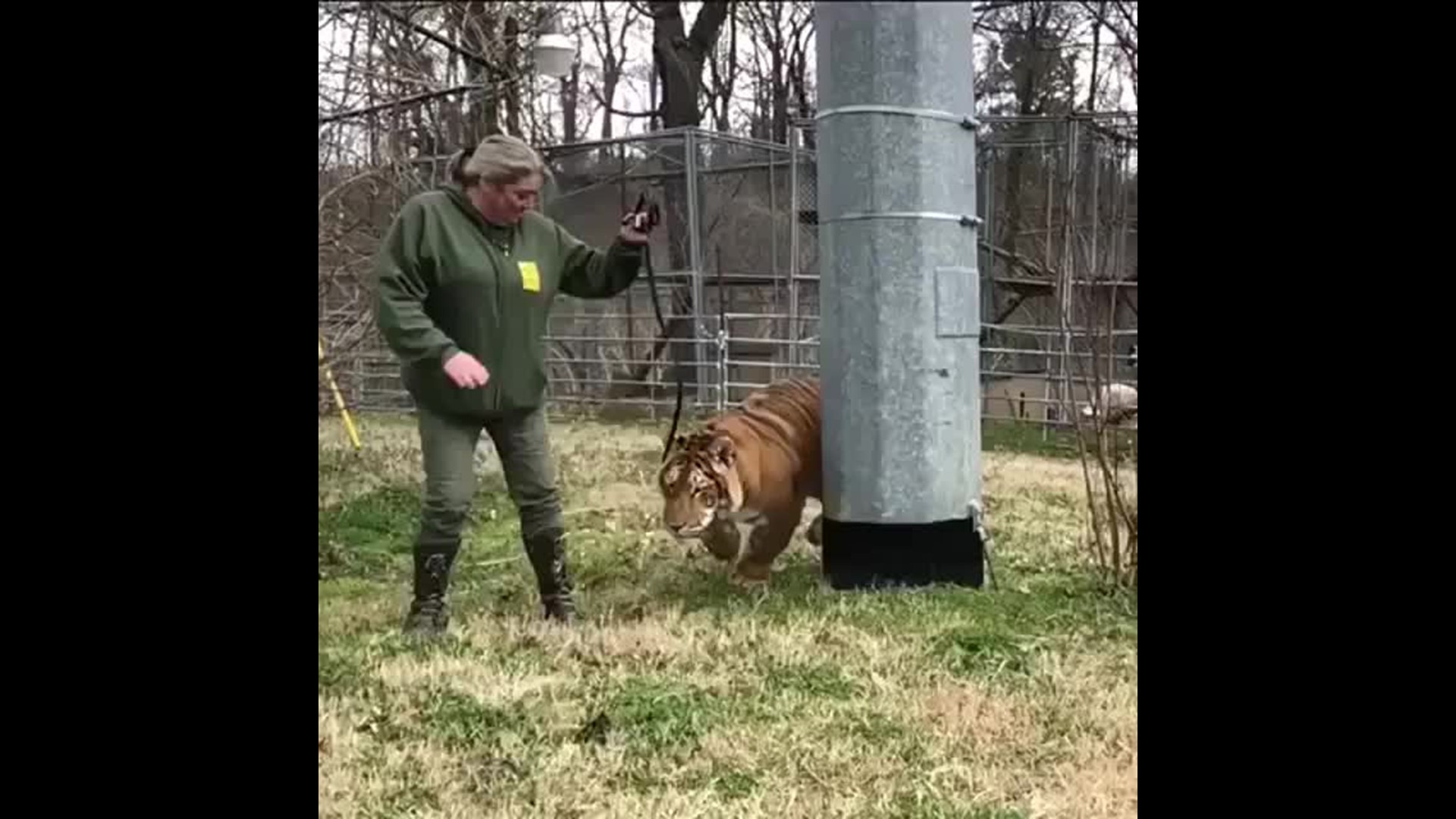BROKEN ARROW, Okla. (KFSM) — On Thursday (Dec. 26), National Geographic released a video on their Instagram showing a tiger-mix at Safari Sanctuary in Broken Arrow jumping a photographer.
Steve Winter was on assignment in Oklahoma working on a project called "The Tiger Next Door," a story on captive tigers in the U.S.
Winter was taking photos of Langely, an 18-month-old lion-tiger mix, who was discarded after he grew too big and dangerous at Greater Wynnewood Exotic Animal Park in Wynnewood, Oklahoma.
During the photoshoot, Langely charged Winter in a playful manner.
Winter was not hurt.
Safari Sanctuary is no longer open to the public.

